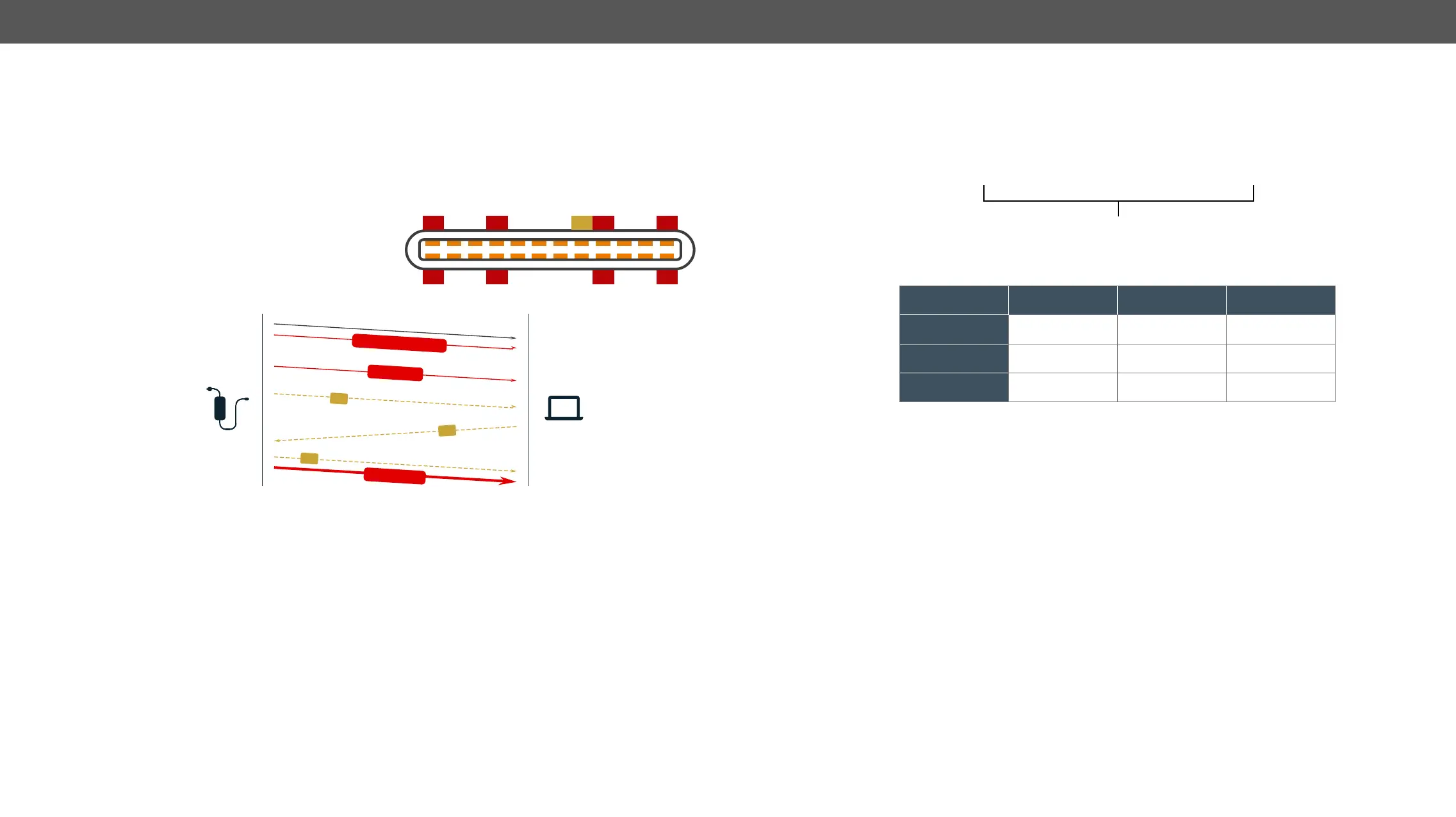4. Installation UCX series – User's Manual 26
USB Chargers
USB-C PD covers a range of different power levels, with different amperage and voltage combinations that
a charger can deliver, depending on what the device asks for and the cable negotiates. These values are
Power Data Objects (USB-C)
▪ Nominal voltage and maximum current
▪ A Source must have at least one PDO
▪ The Sink chooses one of the Sources PDOs
via CC communication
Powering Handshake
GND RX2+ RX2- VBUS sBU1 D- D+ CC VBUS TX1- TX1+ GND
GND TX2+ TX2- VBUS CC D+ D- sBU2 VBUS RX1- RX1+ GND
GND GND
GND
CC
GND
VBUS VBUS
VBUS VBUS
Detecting a valid Source-to-Sink connection
I support: 5V@2.4A, 9V@3A and 20V@3A
I request 20V@3A
Okay, I’ve set my output to 20V@3A
VBUS=0V (Vsafe)
VBUS=20V
CC
CC
CC
VBUS=5V
Dual-Role Power
currently operating in.
USB-C Cable Recommendation
▪ Use Full-featured USB Type-C cables made by reliable brands.
▪ USB2.0 cables miss the Superspeed channels, neither DP video nor USB3 transmission works with
them.
▪
HBR2-HBR3 (5.4Gbps or 8.1Gbps) applications are recommended.
▪ Thunderbolt cables are not backwards compatible to USB3.x or Displayport unless the manufacturer
explicitly states so.
▪
expensive choice.
▪
charging.
Source (SRC)
Sink (SNK)
Dual-Role Power (DRP)
can operate as either
a Source or a Sink
Source-only Sink-only Dual-Role Power
Source-only Non-functional Functional DRP = Sink
Sink-only Functional Non-functional DRP = Source
Dual-Role Power DRP = Sink DRP = Source DRPs negotiate
